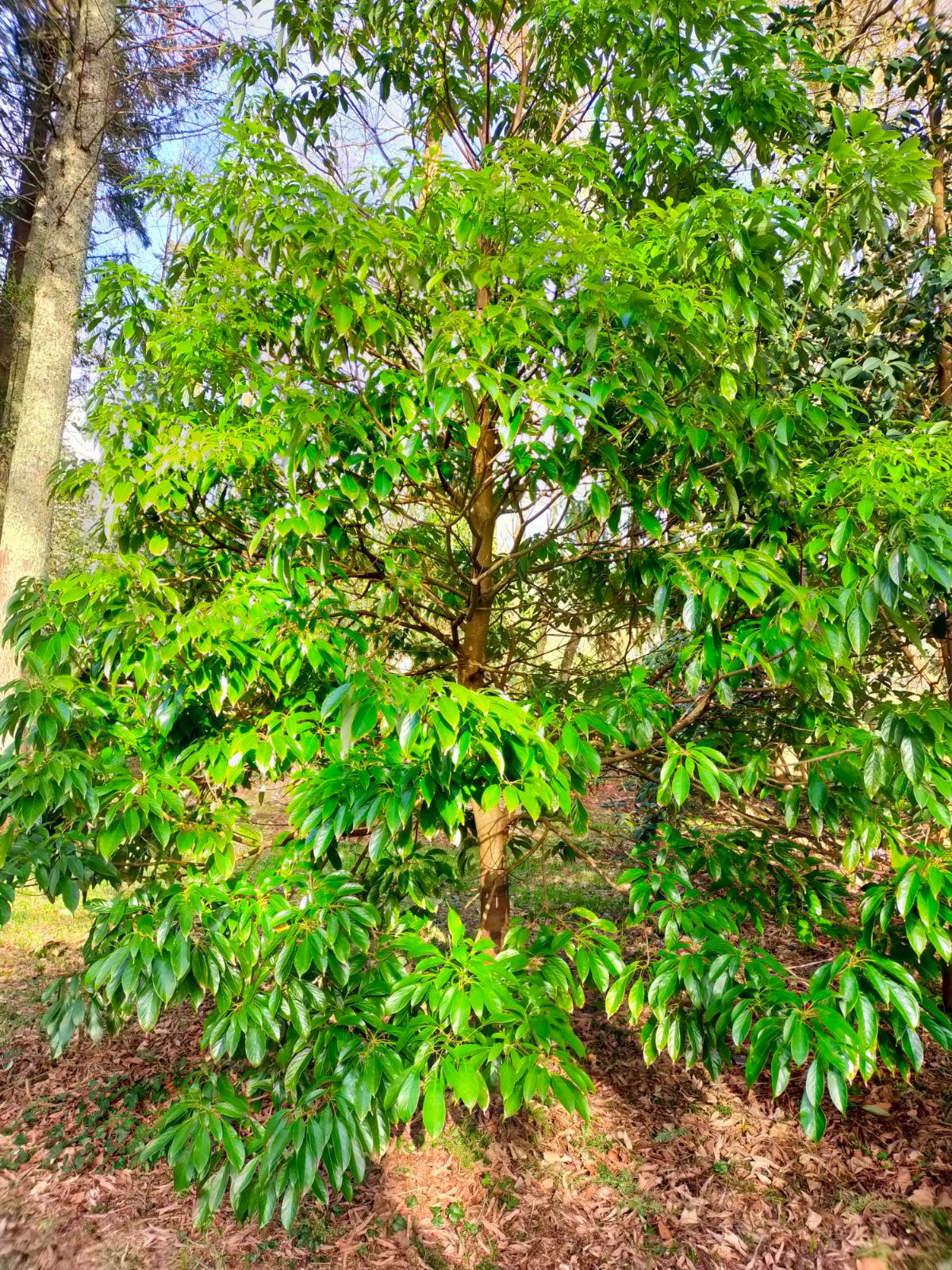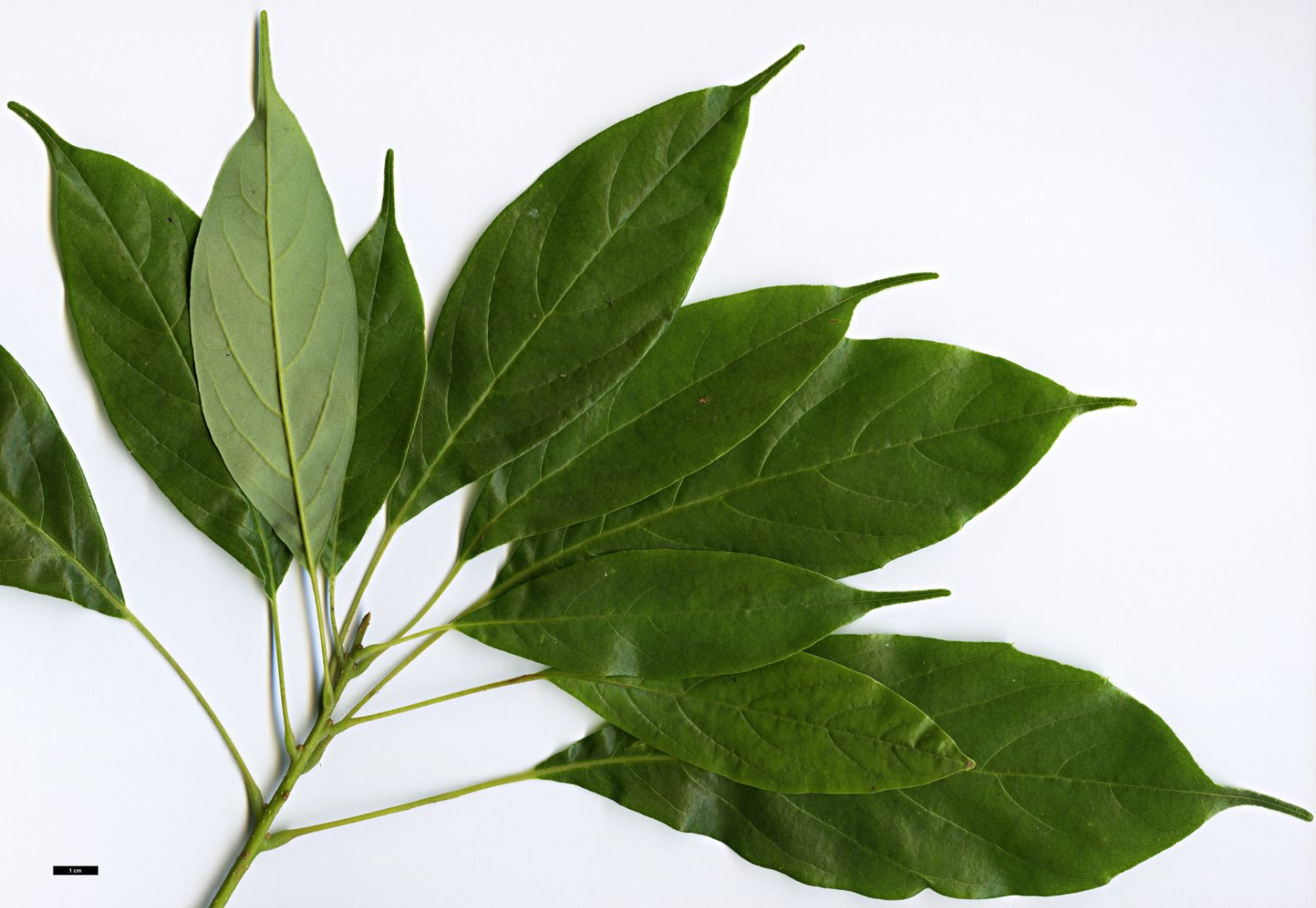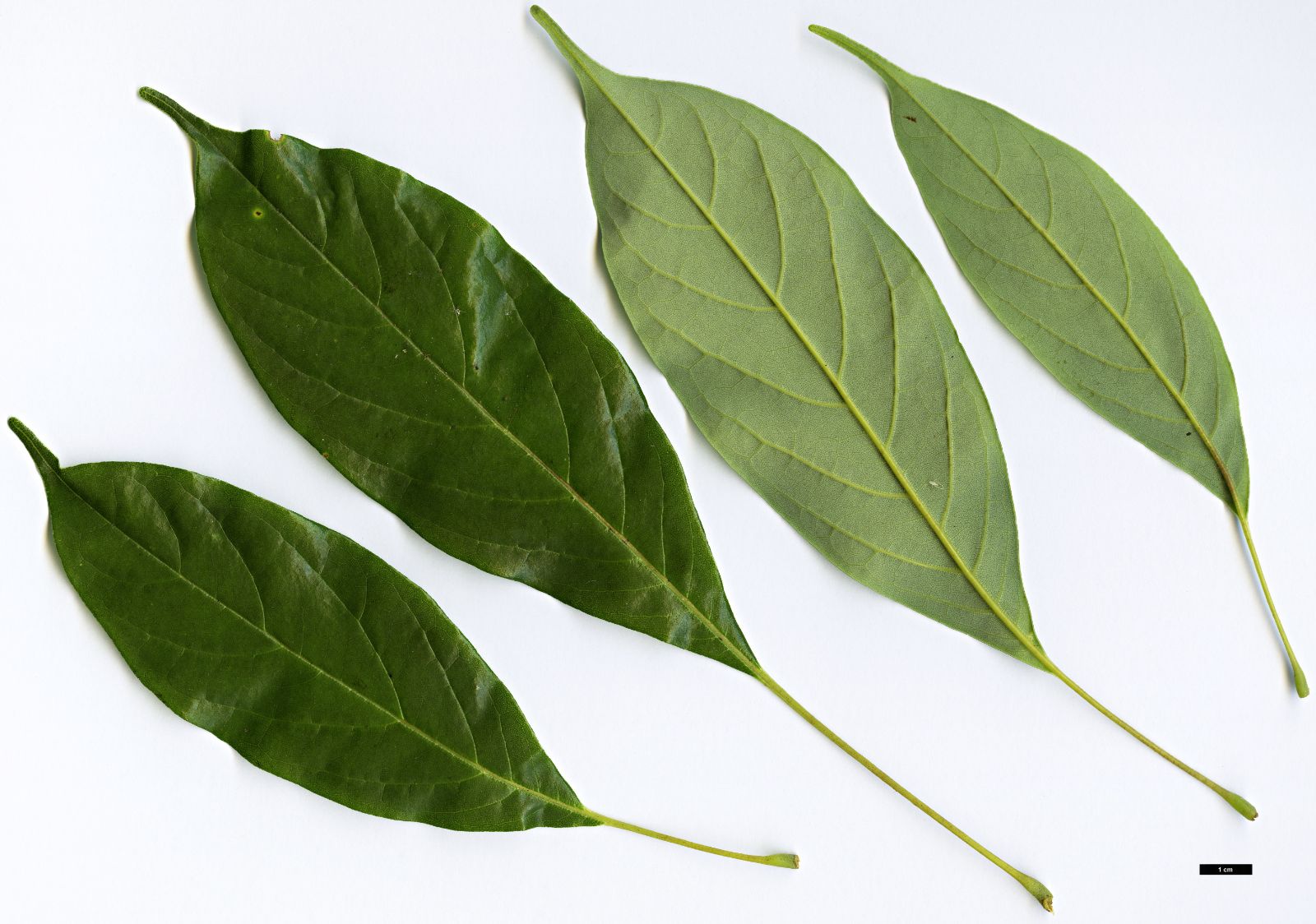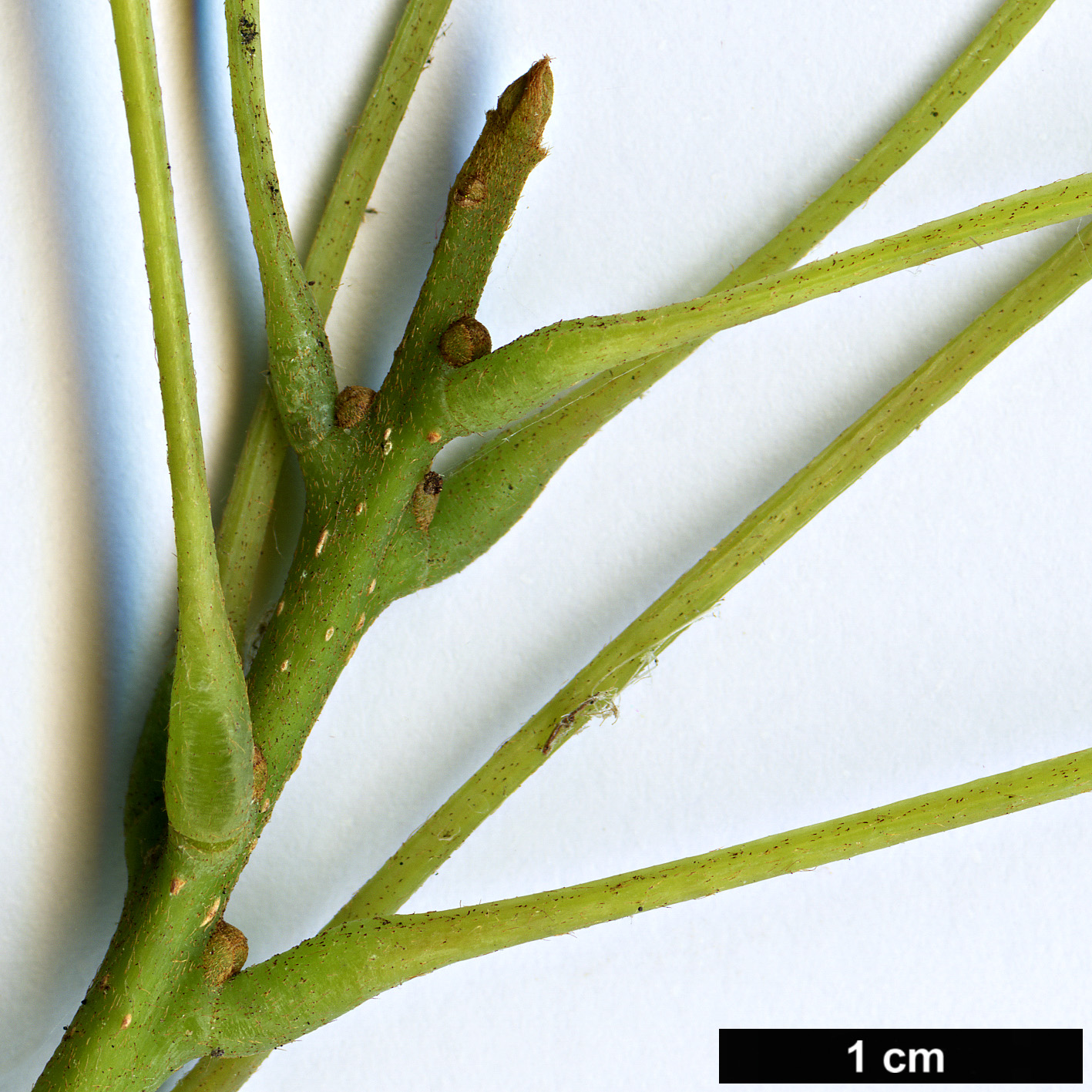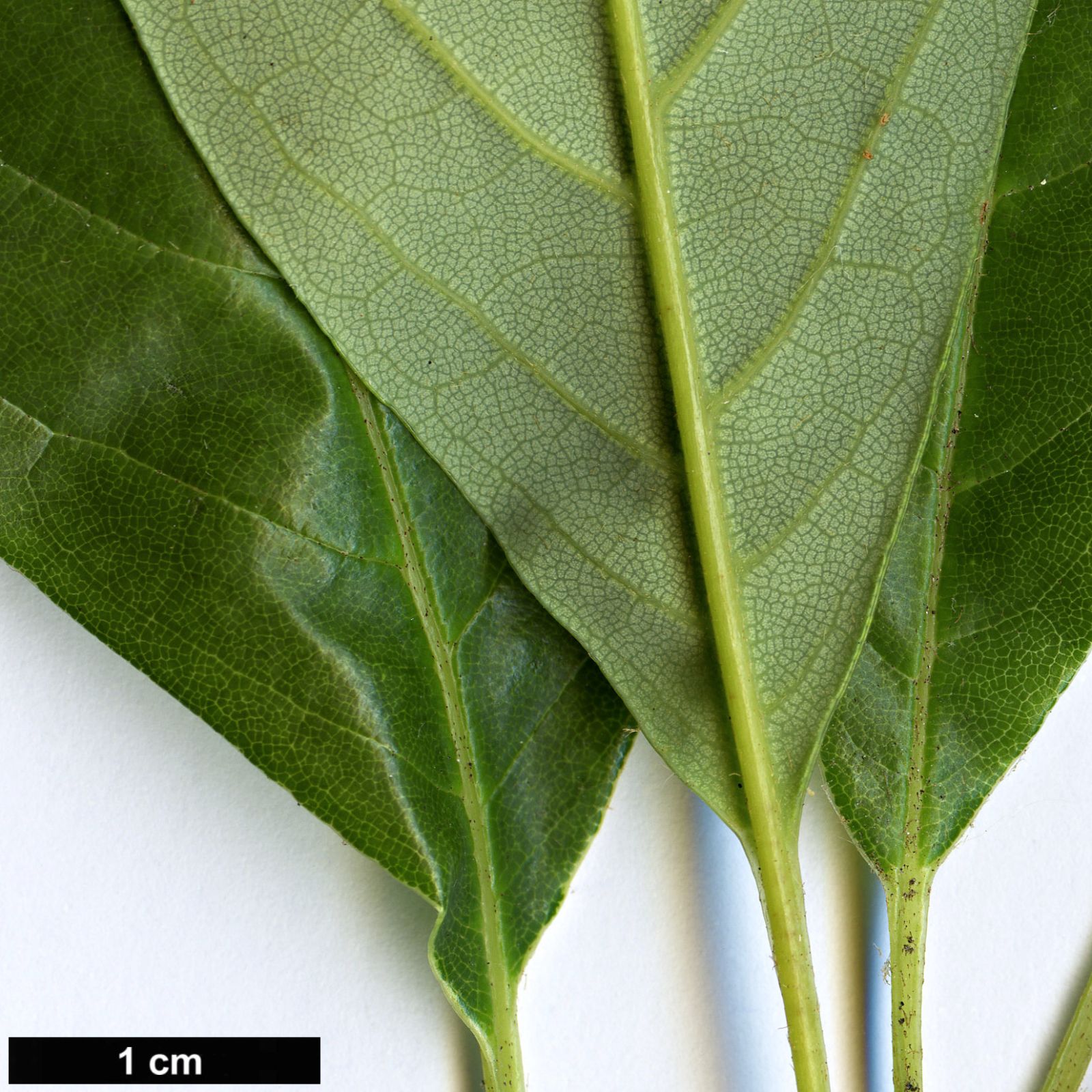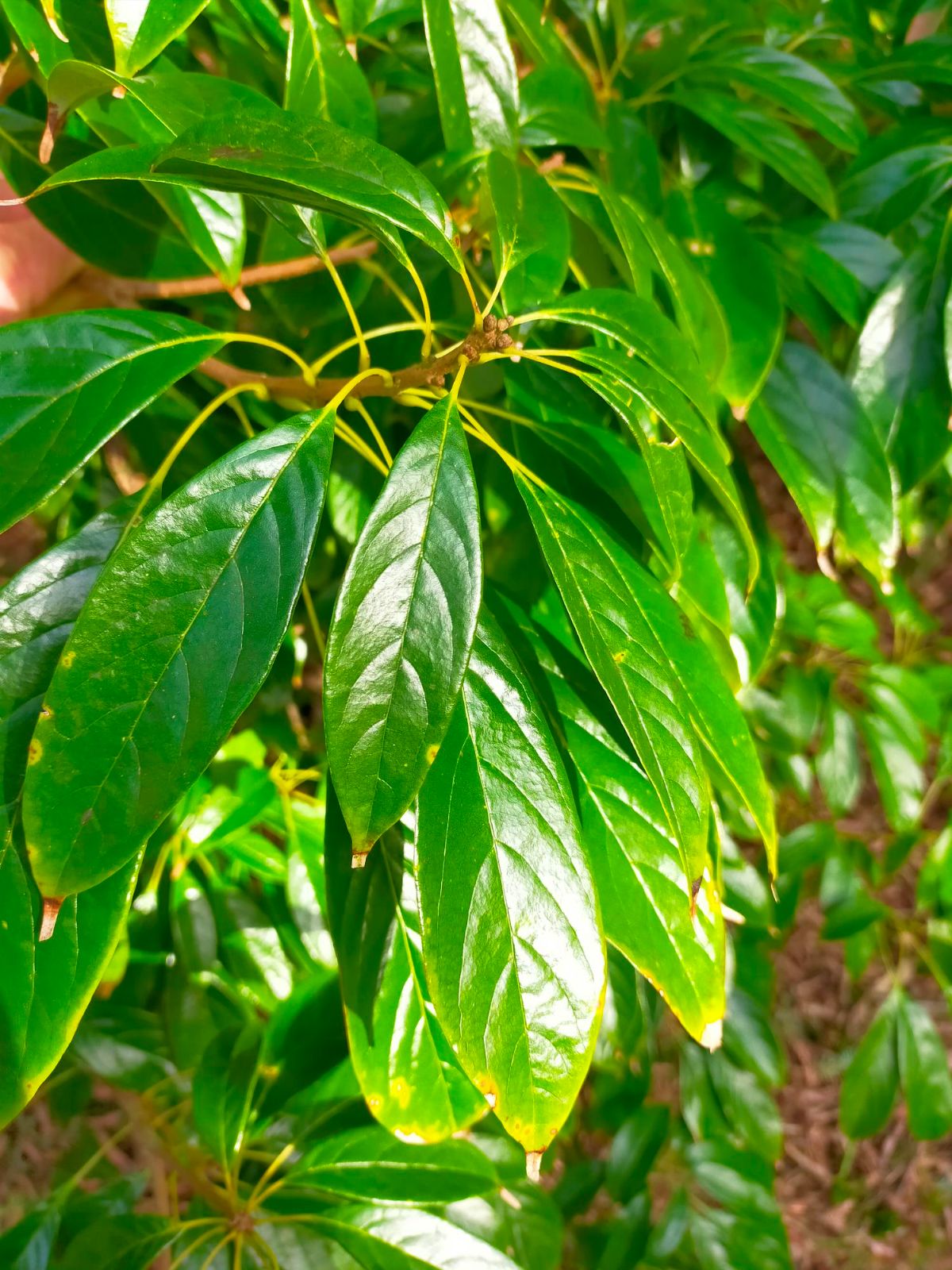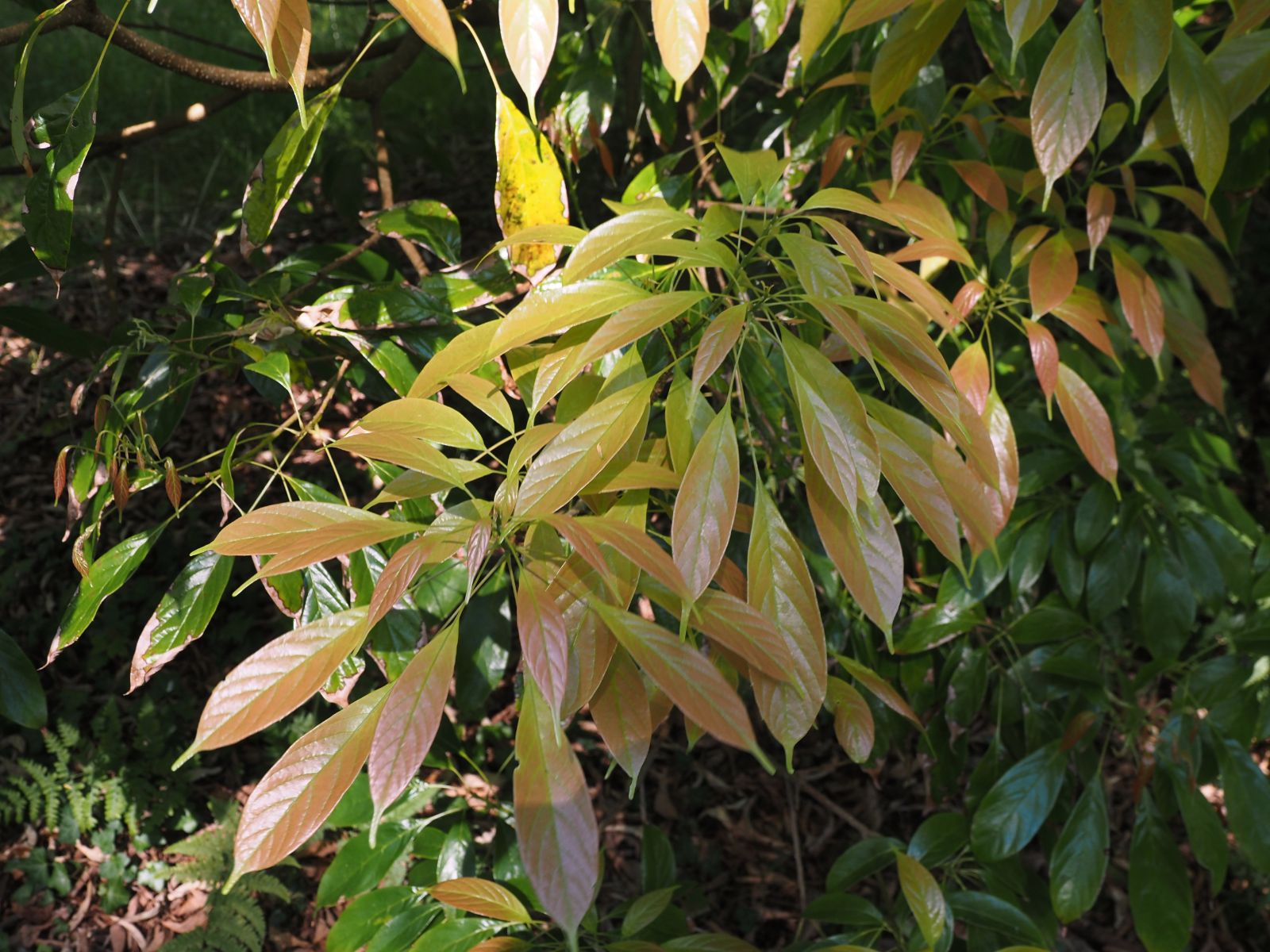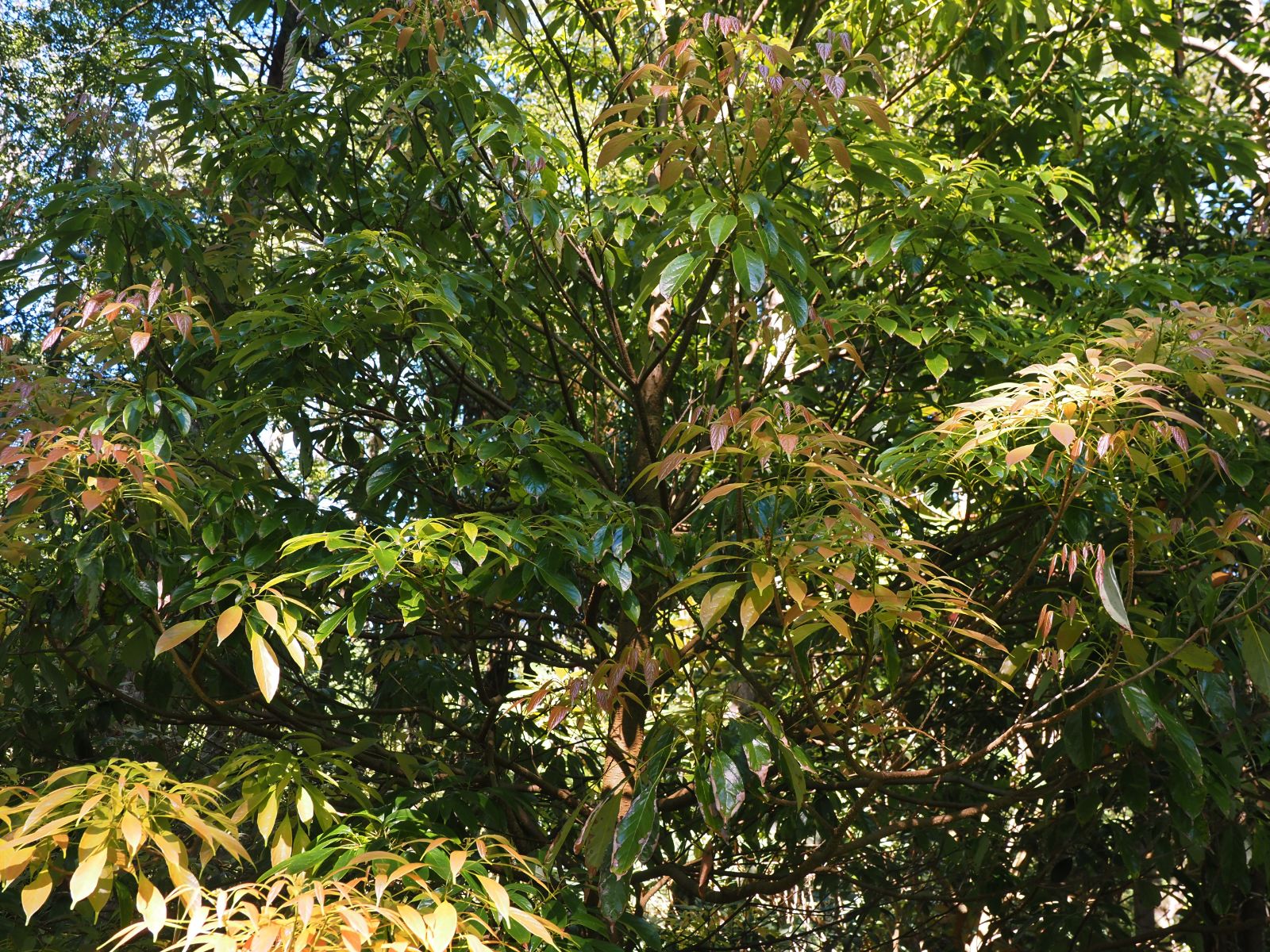Meliosma dumicola
Sponsor
Kindly sponsored by
Lady Diana Rowland
Credits
Owen Johnson (2022)
Recommended citation
Johnson, O. (2022), 'Meliosma dumicola' from the website Trees and Shrubs Online (treesandshrubsonline.
Genus
Synonyms
- Meliosma dumicola var. serrata Vidal
- Meliosma lepidota subsp. dumicola (W.W. Sm.) Beusekom
- Meliosma tsangtakii Merrill
Evergreen tree to 30 m. Twigs grey-brown; twigs, buds, young leaves and flower-heads with rusty pubescence. Leaves simple, narrowly elliptic, 5–15(–18) × 2–5 cm, cuneate at the base, leathery, glossy, becoming glabrous above; veins sunken, in 7–10 pairs which do not reach the margin; margin entire or serrate; petiole long (2–10 cm). Flower-head terminal, rarely axillary, solitary or in clusters of 2–4, erect, 10–16 cm tall, branched 3 times. Sepals 5. Petals yellowish or brownish white, to c. 1.5 mm wide. Fruit 3–4 mm wide, obovoid. Flowers (in the wild) March–May, fruits October–November. (Guo & Brach 2007; De Langhe 2022).
Distribution China Guangdong, Hainan, S Xizang, SW Yunnan Thailand Vietnam
Habitat Subtropical evergreen open forests and in ravines, 1200–2400 m asl.
USDA Hardiness Zone 9
RHS Hardiness Rating H3
Conservation status Not evaluated (NE)
This is one of many rather similar evergreen Meliosma species whose distribution extends south from China into the tropics of south-east Asia; it is included here on the basis of one collection from North Vietnam (TH 5092) which is grown at Tregrehan and Caerhays Castle, both in Cornwall, UK (Williams 2022). The flower-heads are smaller and duller than in the hardy, deciduous Meliosma species, and M. dumicola and its allies seem unlikely ever to be widely cultivated in the west.
At Tregrehan these plants have grown into densely-branched trees 6–7 m tall; they are yet to flower but have been confirmed as Meliosma dumicola by Frits van Beusokem (J. De Langhe pers. comm). The brilliant green, glossy leaves with long drip-tips are strikingly attractive, and have ‘always looked unbelievably fresh and chirpy even with freezing temperatures’ (T. Hudson pers. comm.). In spring, the new leaves are delicately red- or pink-flushed. The leaf-stalk is unusually long for the genus, giving the foliage an extra elegance.

